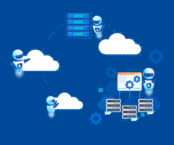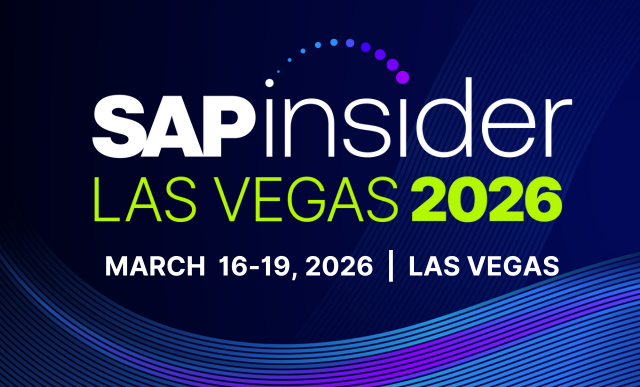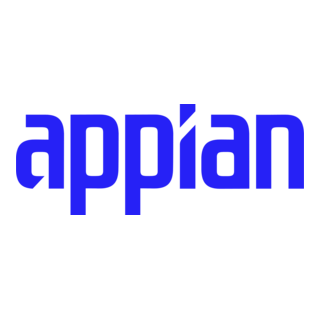SAP FICO
Filter By
Browse By
- SAP Analytics and AI
- SAP Application Development and Integration
- All SAP Application Development and Integration
- SAP ABAP
- SAP ABAP Development Tools
- SAP ABAP Test Cockpit
- SAP API Management
- SAP BAPI
- SAP Basis
- SAP BRF
- SAP Business Application Studio
- SAP CMS
- SAP Design Studio
- SAP Development Tools
- SAP DevOps
- SAP EAI
- SAP EDI
- SAP Extension Suite
- SAP Fiori
- SAP Fiori Elements
- SAP Integration Suite
- SAP Low Code Application Development
- SAP Low Code Automation
- SAP Netweaver
- SAP Release Management
- SAP UI5
- SAP Web Application Server
- SAP Web IDE
- SAP Business Process Management
- SAP Center of Excellence
- SAP CIO
- SAP Customer Experience
- SAP Data and Data Management
- All SAP Data and Data Management
- SAP BW
- SAP BW/4HANA
- SAP Crystal Reports
- SAP Data Archiving
- SAP Data Center
- SAP Data Governance
- SAP Data Integration
- SAP Data Migration
- SAP Data Quality
- SAP Data Services
- SAP Data Strategy
- SAP Data Visualization
- SAP Data Warehouse Cloud
- SAP DMS
- SAP Document Control
- SAP EIM
- SAP ETL
- SAP ETL Tools
- SAP HANA
- SAP HANA Administration
- SAP HANA Deployment Infrastructure
- SAP HANA Studio
- SAP Master Data
- SAP Master Data Governance
- SAP MDM
- SAP Enterprise Architect
- SAP Enterprise Asset Management
- SAP ERP
- SAP Finance
- All SAP Finance
- SAP Accounting
- SAP AR AP
- SAP Asset Accounting
- SAP Billing Systems
- SAP BPC
- SAP BRIM
- SAP Cash Management
- SAP Central Finance
- SAP Controlling
- SAP COPA
- SAP Cost Center Accounting
- SAP Currency Risk
- SAP e-invoicing
- SAP FICO
- SAP Finance Automation
- SAP Advanced Financial Closing
- SAP Financial Consolidation
- SAP Financial Planning
- SAP FX Risk
- SAP General Ledger
- SAP Global Tax Management
- SAP Hyperion
- SAP Order to Cash
- SAP Payment Processing
- SAP Profitability Analysis
- SAP Rebate Management
- SAP S/4HANA Finance
- SAP SWIFT Compliance
- SAP Treasury Management
- SAP Universal Journal
- SAP Governance Risk and Compliance
- SAP Human Capital Management
- SAP Intelligent Technologies
- SAP Platform and Technology
- All SAP Platform and Technology
- SAP Business Technology Platform
- SAP Cloud
- SAP Cloud Connector
- SAP Cloud Integration Platform
- SAP Cloud Migration
- SAP Cloud Platform
- SAP Cloud Providers
- SAP Cloud Strategy
- SAP Digital Signature
- SAP Container Platform
- SAP HANA Enterprise Cloud
- SAP Digital Asset Management
- SAP Smart Forms
- SAP HEC
- SAP Digital Integration Hub
- SAP Hyperscalers
- SAP Infrastructure
- SAP Messaging
- SAP Quality and Testing
- SAP Security
- SAP Spend Management
- SAP Supply Chain Management
- All SAP Supply Chain Management
- SAP APO
- SAP Asset Management
- SAP Business Network
- SAP Digital Manufacturing Cloud
- SAP Digital Twin
- SAP EWM
- SAP IBP
- SAP Inventory Management
- SAP Label Printing
- SAP Logistics
- SAP Manufacturing
- SAP Manufacturing Automation
- SAP MES
- SAP MII
- SAP MM
- SAP MRO
- SAP MRP
- SAP Order Management
- SAP Plant Maintenance
- SAP PLM
- SAP Production Planning
- SAP S&OP
- SAP SD
- SAP SPM
- SAP Supply Chain Planning
- SAP Track and Trace
- SAP Transportation Management
- SAP System Administration
SAP FICO: An Overview and Key Considerations
What Is SAP FICO?
SAP FICO is SAP’s core functional module consisting of the tightly integrated Financial Accounting (FI) and Cost Controlling (CO) modules, designed to enable the recording of financial transactions across parent and subsidiary entities, the production of financial statements, and support both internal and external reporting, at the end of every period.
The SAP Financial Accounting (FI) module supports accurate financial accounting and financial reporting, while the SAP Cost Controlling (CO) module facilitates cost planning and cost monitoring.
Key sub-modules for SAP FICO:
- Financial Accounting (FI)
- Asset Accounting
- Accounts Payables
- Accounts Receivable
- Bank Accounting
- Fund Management
- General Ledger Accounting
- Travel Management
- Cost Controlling (CO)
- Activity-based Costing
- Cost Center Accounting
- Cost Element Accounting
- Internal Orders
- Product Costing
- Profit Center Accounting
- Profitability Analysis.
The primary objectives of SAP FICO are to provide financial transparency, improve data consistency, and enable business process integration within the organization. Organizations can leverage the inter-connected sub-modules and real-time data streaming to produce trial balances that accurately reflect most business processes from various industries. SAP FICO is an end-to-end solution that combines industry best practices with application expertise, deep-process knowledge, and technical innovation.
Key Considerations for SAPinsiders
SAP FICO: An Overview and Key Considerations
What Is SAP FICO?
SAP FICO is SAP’s core functional module consisting of the tightly integrated Financial Accounting (FI) and Cost Controlling (CO) modules, designed to enable the recording of financial transactions across parent and subsidiary entities, the production of financial statements, and support both internal and external reporting, at the end of every period.
The SAP Financial Accounting (FI) module supports accurate financial accounting and financial reporting, while the SAP Cost Controlling (CO) module facilitates cost planning and cost monitoring.
Key sub-modules for SAP FICO:
- Financial Accounting (FI)
- Asset Accounting
- Accounts Payables
- Accounts Receivable
- Bank Accounting
- Fund Management
- General Ledger Accounting
- Travel Management
- Cost Controlling (CO)
- Activity-based Costing
- Cost Center Accounting
- Cost Element Accounting
- Internal Orders
- Product Costing
- Profit Center Accounting
- Profitability Analysis.
The primary objectives of SAP FICO are to provide financial transparency, improve data consistency, and enable business process integration within the organization. Organizations can leverage the inter-connected sub-modules and real-time data streaming to produce trial balances that accurately reflect most business processes from various industries. SAP FICO is an end-to-end solution that combines industry best practices with application expertise, deep-process knowledge, and technical innovation.
Key Considerations for SAPinsiders
Leverage SAP FICO to generate timely insights within current processes. Organizations typically modernize ERP financial landscapes in phases and not all at once. As a result, finance and accounting managers must incorporate processes across multiple technologies, including legacy or manual solutions, to deliver business benefits. The flexibility of SAP FICO supports this option, as Mark Pockl, insightsoftware’s Solution Engineer, specializing in SAP and Orace EBS reporting solutions, provides best practices for leveraging SAP FICO inside Excel.
SAP FICO automation can enable the standardization of financial processes. With SAP FICO, finance teams are equipped with standard solutions capable of supporting automation across many manual processes related to financial transactions and reporting. This helps finance teams, including the finance departments at Kellogg Company and Newell Brands, effectively manage financial data within SAP ERP systems, including generating reports that different departments require for decision-making.
Economic disruptions increase the need for financial visibility across organizations. SAP FICO is designed to support multiple views of your organization in real time, providing visibility for finance managers at the most critical junctures. In addition, by accurately and quickly managing cost planning and cost monitoring requirements consistently across the business units, organizations can generate ad-hoc reporting from costing and profitability insights.
51 results
-

- SAP S/4HANA Finance
 Premium
Premium
Tips and Tricks to Ease SAP S/4HANA Finance Migration Challenges
Are you ready for your finance project? Your SAP S/4HANA Finance budget is approved, but are you ready to start your SAP S/4HANA Finance project? Are your existing processes consistent for you to successfully migrate? Understand the key data objects (such as customers/vendors, consistent items and balances, consistent FICO setup and more) that you need…
-

Deliver Financial Insights with End-To-End Process Optimization
April 25, 2023
Join insightsoftware’s Senior Solutions Engineer Mark Pockl as he demonstrates how to combine Excel-based SAP tools to automate FICO data entry and install drillable, real-time financial reporting to gain valuable business insights. He’ll also be showcasing a tool that lets business users across departments act on financial data insights and automate SAP data processes. This…
-

- SAP S/4HANA
 Premium
Premium
Tips and Tricks to Ease SAP S/4HANA Finance Migration Challenges
Click Here to View the Session Deck Tips and tricks to ease SAP S/4 HANA Finance migration challenges Mitresh Kundalia, Quality Systems & Software Your SAP S/4 HANA Finance budget is approved, but are you ready to start your SAP S/4 HANA Finance project? Is your existing data consistent for you to successfully migrate? Understand...…
-
-

SAP Best Practices: Data Automation 101
April 11, 2024
Ready to revolutionize your SAP operations and eliminate time-consuming, manual processes? In this webinar on-demand, we’ll explore the best practice of process automation with SAP data, helping you save time, improve accuracy, and boost productivity. Whether you’re a finance professional, supply chain manager, or IT expert, it’s time to get moving with simple, powerful SAP…
-

Customer Success Story: S/4HANA Optimization Project
Reading time: 2 mins
Unlock the full potential of your SAP implementation with Ameri100’s expert S/4HANA optimization services. In a recent project for a leading sports entertainment company, we revolutionized operations across FICO, Accounts Payable (AP), Procure-to-Pay (PTP), Order-to-Cash (OTC)/Accounts Receivable (AR), and more. By embracing an Agile approach, our team swiftly adapted to evolving priorities, delivering significant process…
-

Understanding the Difference Between SAP ECC and SAP S/4HANA
Reading time: 6 mins
By now, it’s well known that moving to a modern ERP is one of the most important decisions in your digital transformation journey. SAP’s modern ERP system—in 2015, SAP customers have known that they will eventually need to move off of SAP ECC and adopt SAP’s powerful next-generation ERP software, S/4HANA. Now, with the 2027…
-

3 Ways to Close the Skills Gap Plaguing Your SAP Users
Reading time: 3 mins
Given the wide array of SAP reporting tools, it’s not surprising that many users feel frustrated by the complexity of the software and the dependencies that it creates for scarce IT resources. SAP develops some of the most powerful business applications in the world, but it often does so at the expense of simplicity.
-
-

Herbal medicine manufacturer makes S/4HANA shift with SNP
Reading time: 2 mins
Global herbal medicine manufacturer, Bionorica, sought to convert its existing ERP ECC 6.0 system to SAP S/4HANA, and the project was made more complex by including new process changes in accounting.
-

Automated SAP Fiori testing for Norwegian renewables firm Hydro
Reading time: 2 mins
On a mission to “change the aluminum game”, Hydro has been on an ongoing journey to take its IT technologies to the cloud for greater sustainability wins. Testing its SAP Fiori instance, Hydro turned to ImpactQA for end-to-end validation of the implementation, along with its interfaces with other in-house applications. Membership Required You must be…
-

Revolutionizing Customer Conversations with OpenText and SAP
Reading time: 3 mins
OpenText’s Outbound Communications from SAP Solutions transforms customer communication by centralizing and personalizing outbound messaging, enhancing collaboration and compliance, ultimately turning necessary communications into strategic assets that improve customer engagement and drive revenue.
Become a Member
Unlimited access to thousands of resources for SAP-specific expertise that can only be found here.
Become a Partner
Access exclusive SAP insights, expert marketing strategies, and high-value services including research reports, webinars, and buyers' guides, all designed to boost your campaign ROI by up to 50% within the SAP ecosystem.
Upcoming Events
Related Vendors
Your request has been successfully sent


